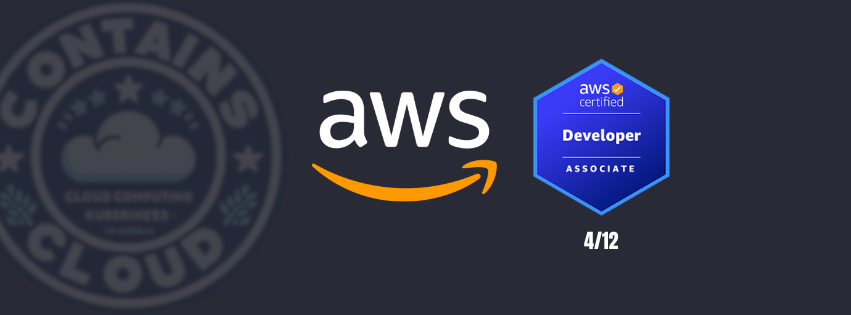Hey folks, what’s up?
Yesterday I did the AWS Certified Developer – Associate exam after my old one expired and with that, it’s officially open my journey to get the AWS golden jacket. This was never a real goal, but as we’ve already come a third of the way, having acquired 4 of the 12 certifications available, I think it’s worth a try.
It means that you’ll find a serie of posts related to AWS certifications over the coming months. I’ll try not to be repetitive and just tell a bit about my experience during the exam and summarize what I believe that is essential knowledge to do well in the exam.
The AWS Certified Developer – Associate exam

I took the exam online, at home, and it took me about 50 minutes to complete it. With a total of 65 questions, the score needed to pass the exam was 720 and I scored 800🏅
In general, it’s a very straightforward exam, where the questions are short (2-3 lines in most of the cases) and focus on understanding whether you know the correct featured to solve the problems presented.
Although it’s an exam for developers, I didn’t have any questions that involved code, for example using the CDK or Boto3; the closest I got were questions with CloudFormation code and AWS CLI commands.
Based on my experience, beyond the basic knowledge on the AWS Resources, you must be comfortable with:
Lambda:
- How to use ALIAS and VERSIONS and how it can help you during the deployment and test of new versions of code.
- How to increase resources of a Lambda function. And there is a tricky scenario here to be aware, as you cannot increase directly CPU.
- The requirements for running inside a VPC such as IAM policies, Security Group rules, etc.
- Encryption applied to environment variables
- AWS Serverless Application Model (AWS::Serverless::Function) and dependencies
DynamoDB:
- Differences between Global Secondary Indexes (GSI) and Local Secondary Indexes (LSI)
- Best practices of Primary Key and Sort Key
- When you must use Parallel Scans or Full Scans
- Query vs Table Scan vs GetItem vs GetItemBatch
- Amazon DynamoDB Accelerator (DAX)
API Gateway:
- Proxy integration with Lambda
- How to configure CORS
- Using API Caching to improve performance
- Canary Release Deployment
- Using stage variables for multi-environment APIs
Deployment:
- Differences between Blue-Green, Canary and RollingUpdate
- How to override the buildspec.yml file on AWS Code Build using AWS CLI
- Best practices applied to buildspec.yml
- Feature Flag with AWS App Config
- Configuring and customizing Elastic Beanstalk using .ebextensions folder
- The walking deads CodeStar and CodeCommit
IAM & Identity:
- Allowing resource communication using IAM roles
- Using AWS Cognito as Identity Provider
- Differences between AWS Cognito User Pool and AWS Cognito Identity Pool
- S3 policies
Other topics:
- X-Ray traces filters and configuration.
- CloudFormation in general
- ECS task definition configuration
- ECR features beyond container registry (cache repository, vulnerability scans, etc)
- Differences between Kinesis Data Firehose and Kinesis Data Stream
- Storing and consuming secrets and parameters securely with Parameter Store and Secrets Manager
Remembering that these are the most specific topics I can think of, if you want to know everything that is covered in the exam, you should read the Exam Guide, available on the official certification page: AWS Certified Developer – Associate.
Bonus: Don’t know what the AWS Golden Jacket is?

It’s a prize for those who manage to pass all 12 certification exams available and keep all the badges active at the same time. It’s quite a challenge since the certifications cover several IT areas in detail and require in-depth knowledge in all of them, but we’re going for it!
If you have any questions related to the exam, please, let me know.

Leave a Reply